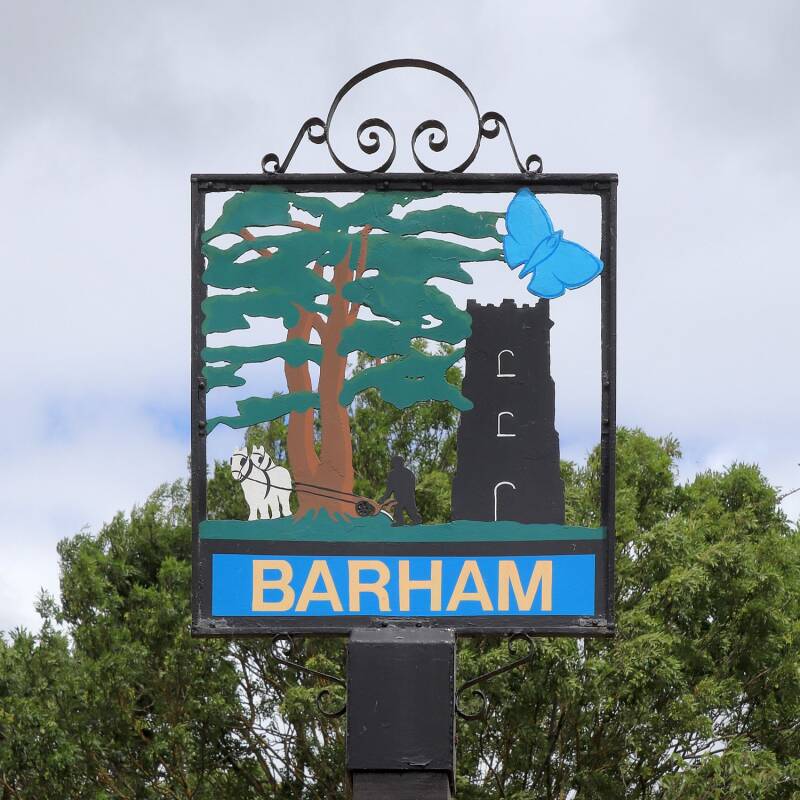Barham
The Sign
(taken from Wikipedia from a now redundant link)
The proposal that a village sign should be made and erected at some suitable spot in the parish of Barham was agreed by the Parish Council in 1985. Following this decision, a design was worked out by the late Keith Pilling, an artist and member of the council at that time. Once the design was produced, offers of help to supply materials, welding and painting were made by local residents. The sign which we see today is therefore the work done by parishioners of Barham. It was completed in 1989 and the unveiling ceremony was performed by County Councillor Mr G H Caldwell-Smith on Saturday 7 October 1989.
The sign is aluminium with a steel surrounding frame and depicts various aspects of Barham.
The tower of the church (being by far the oldest building in the parish).
The cedar tree under which the rector of Barham, William Kirby who died on 4 July 1850 aged 90, used to sit and study moths and butterflies. He produced a book on the subject entitled 'An Introduction to Entomology'.
A butterfly is depicted at the top right of the sign.
A horse and ploughman indicates the rural nature of the parish
The blue and yellow lettering reflects the earlier dedication to St Mary of the Parish Church.
The design is meant to be easily maintained with a simple black paint, only the butterfly being in colour. The whole effect depends on viewing in silhouette against the sky. The magnificent cedar tree depicted in the village sign stood close to the footpath on the Old Norwich Road, opposite Kirby Rise for hundreds of years. In August 2002 it suffered damage from high winds but the Preservation Officer considered that with suitable pruning it would last for decades. However, in November 2002 further damage occurred during severe storms and on inspection again, the Preservation Officer considered the tree to be in a sorry state and of little amenity value. He therefore advised its removal on safety grounds and indicated that a replacement tree of the same species should be planted. The tree was finally removed and burned on site on 26 February 2003. The replacement cedar tree is now in place to grow to maturity for future generations to appreciate.
The Name and Population
The population was 1,504 at the 2011 census. It was called Bercham in 1086. The name probably means "Hill homestead or village" or "Hill hemmed-in land", from Anglian and Old English.
Other Points of Interest
Barham is one of the workhouses with a claim to have been the basis of Charles Dickens' story, Oliver Twist. Dickens is said to have been shown around the workhouse on a visit to Suffolk and to have seen a record book containing the details of a ten-year-old boy's apprenticeship.
